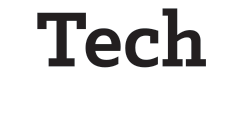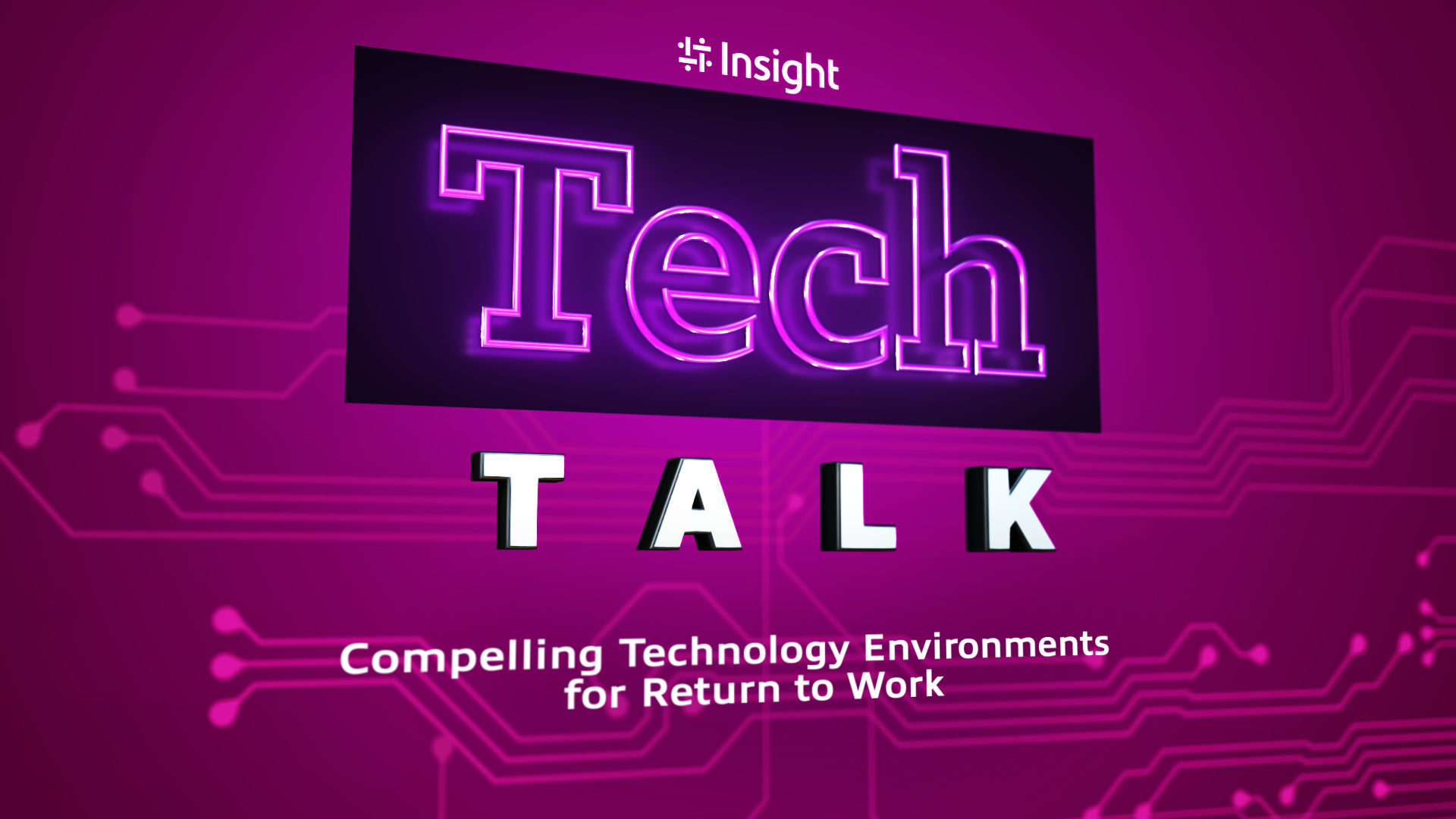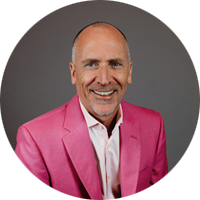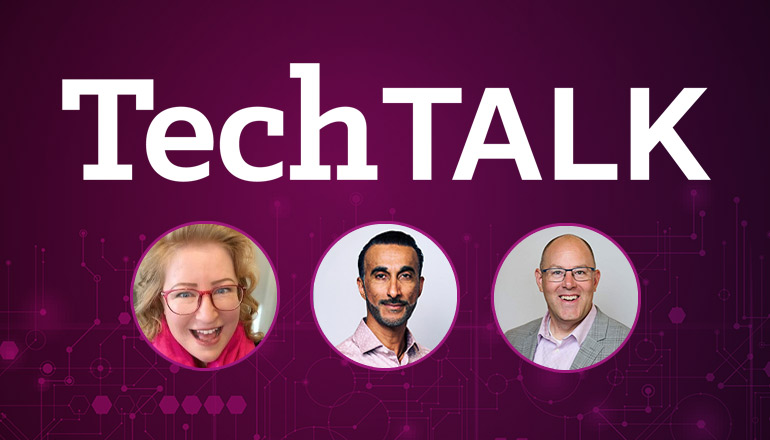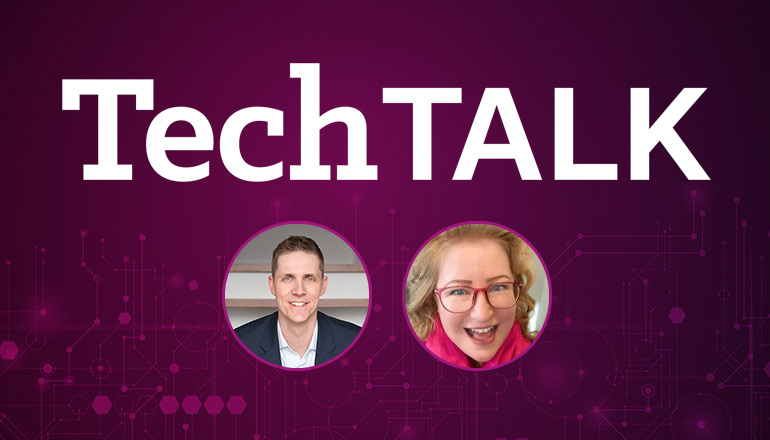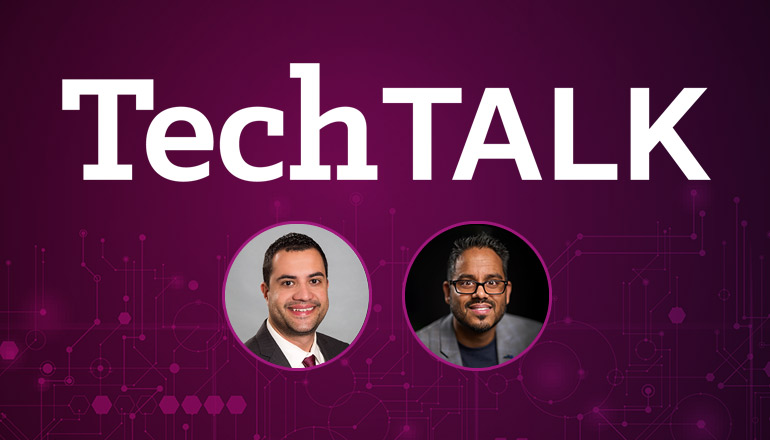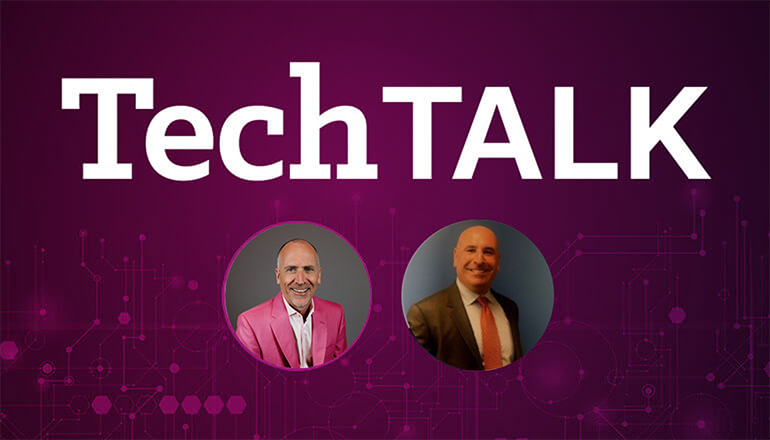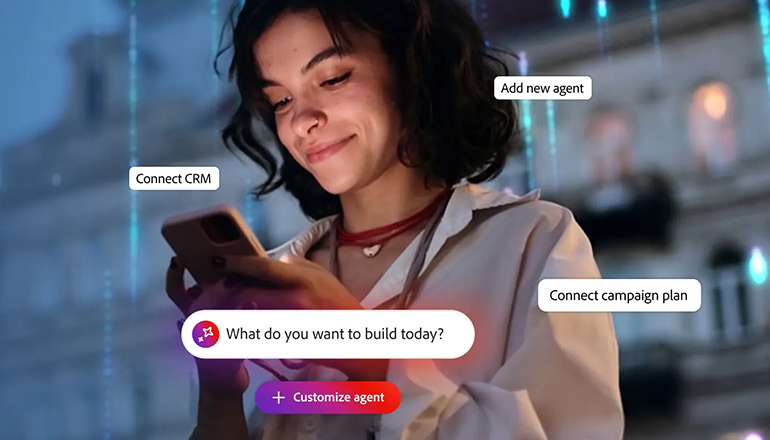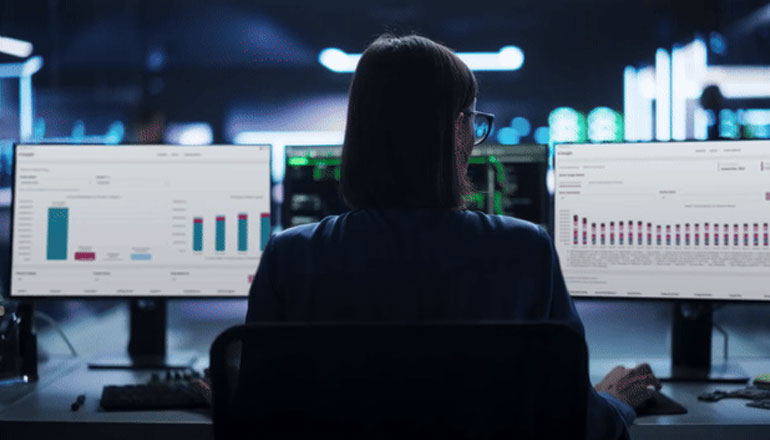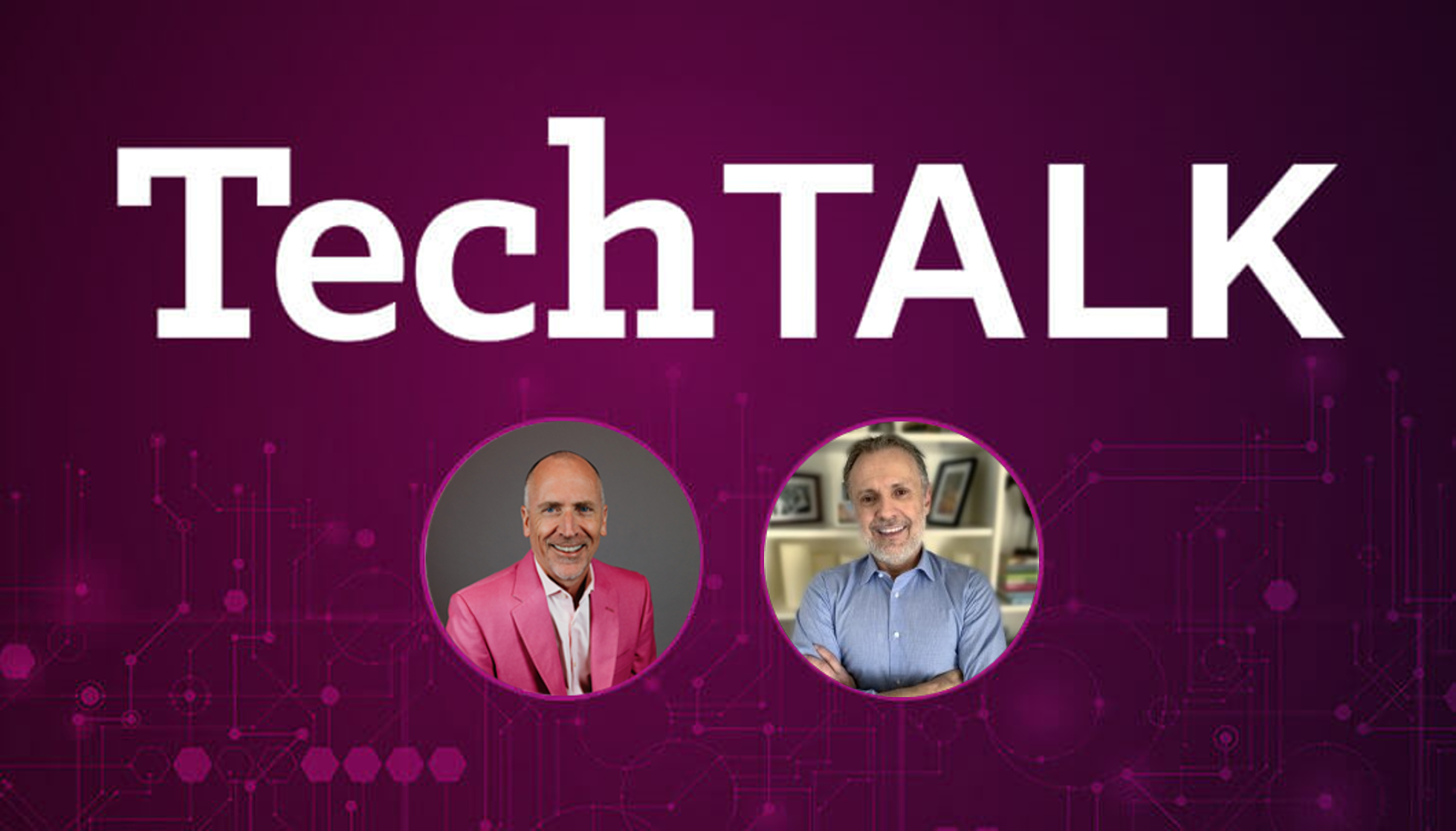Transcription de l’audio:
Environnements technologiques convaincants pour le retour au travail
Publié le 3 mars 2022
JOHN
Hello, and welcome to another edition of Insight's Tech Talk. And we're thrilled to have you join us today. This is a platform that we use to bring industry expertise, and particularly that with our partner community to help us talk to our clients about what's going on in the industry. Today I'm very happy that Amit Bhaga has joined us from Dell Canada. Amit's got a really interesting role and he's really got expertise around complex technologies. So I mean, why don't you talk a little bit about what that is?
AMIT
Well, thanks for having me. So yeah, my role is a little bit different, but I am actually the Canada country sales leader for our Client Solutions Group at Dell. When it comes to complex solutions, I do have a set of field, as well as inside sales makers that focus on our specialty products in Client Solutions Group, which are our workstations Rugged, Thin Client Compute, as well as our premium panel displays.
JOHN
Nice. Sounds like you get to, to work with all the fun stuff. So that's great. So we were talking about this, you know, what's so relevant and you and I are in so many conversations every day really about hybrid work, right? Whether it's back to work, work from home, all of the different things, IT's still a very, very real situation. And you had an interesting expression that you used, and you described it as there has to be a compelling reason to go to the office, or to go back to the office. So maybe you could talk a little bit about that. I thought it was fascinating.
AMIT
Yeah, absolutely. You know, hybrid work means a lot of different things to many different organizations. And you and I have been, and speaking to a lot of those customers. But the normal, you know, before COVID was, you know, IT teams were supporting a handful of remote configurations. It was a nice to have. Then when COVID hit a majority of our customers, they weren't prepared, you know they struggled to give the right technologies to the hands of their users. Now, I give a big shout out to those incredible IT heroes that were simply just putting you know, keeping the lights on. But handing tech to an end user doesn't really solve the hybrid work problem. You know, there needs to be a fundamental change in culture in the way we do work. Now at Dell Technologies, we didn't really have a hard time in that because remote work has been part of our culture. You know, back in 2009 we started a program called the Connected Workplace. And this was a program that, you know, kind of fundamentally changed the culture at Dell technologies around the operations and choosing the work style that best fulfills the need and the job, what entails, you know, being highly mobile, collaborative and having a flexible work setting. Now, as we all sort of hopefully, you know, come and step foot outside of a post COVID world, you know, companies are getting ready to a chance to breathe and reflect on this new digital workspace. And our ongoing research is telling us that the vision of the future is hybrid. You know, very, very few people have told us that they want to go back to a, you know, Monday to Friday commute, back and forth. So there will be a degree of hybridity for everyone. And when we start looking in that point that we are talking about, you know, when you go in it has to be a choice, you know, the cost to commute, there's benefits to paying that cost, you know, as we start to work from home more and no longer in the office as much, there's a reallocation of time and that workspace right? Time doesn't magically go away. So we now have to re-evaluate, you know, if we're spending less time in the office, we're spending more time at home, or we're going to be spending more time in a collaborative space, or we're going to be spending more time in a, you know, a third place, whether it be a coffee shop, a park bench or on a boat, you know. So we don't really think of work as a location. It's an outcome. And our customer's workspaces are going to need to scale, you know, technologically in a way that empowers people to make that choice on how they work. And our teams at Dell and Insight are working with customers to get ready for that.
JOHN
Yeah. So prior to the last wave, we had started to go back to the office a little bit, and we were encouraging teams to get together. You know, if it was just a day, a week, you know and do some collaboration. But what I observed was, that I would see a team of people all with headsets on, all looking at their screens. And so I was really challenging managers. Guys you've got to take ownership of that day. If people are doing exactly the same thing they would be doing from the home office? Then you really haven't created, as you describe it, a compelling event to actually, you know, to change that and go do that.
AMIT
Absolutely. I mean, there has to be a different way of working when you're in the office because, you know, I can do the same thing, you know, put on a headset and do my job. But, you know, there are things that we're going to see in the new sort of digital workspace office place, is you know, collaboration rooms, right?
JOHN
Yep.
AMIT
That face to face interaction, there's a reason why I want to go into the office because I need to collaborate with that team, get that extra sort of innovation of, you know, the juices flowing when you're all in a room and talking, right?
JOHN
Yeah.
AMIT
It's a little bit different, you know, versus Zoom or teams, in terms of collaboration.
JOHN
Yeah, we encourage messy meetings, and they're harder you know, in a video context, right. 'Cause you can't talk over each other and all these kinds of things. And so one of the things we're talking about, for example, is, as much as I love Microsoft office, how about no PowerPoint, right? Like let's just use a whiteboard and let's draw some ideas and challenge each other and those kinds of things. So a little bit different.
AMIT
Absolutely.
JOHN
So, you know, Dell's a fabulous company and an incredible partner of Insight's but I'm going to be the devil's advocate for just a second here. I just mentioned Microsoft office with so much of it being in the Cloud now.
AMIT
Yep.
JOHN
Does the device matter?
AMIT
So, you know, shameless plug, you know, Dell Technologies is the only Tier 1 OEM that has a broad portfolio of devices that meet the boardroom to the battlefield. Right? Now we know that the future of the workspace is dynamic and hybrid. So as these workloads, or even these workspaces, move into the Cloud, we believe that the end user experience on the device is still going to be important. And the way you provide that experience has to be, you know, it's more important than ever, as these workloads start to go, whether they're Cloud or hybrid, you know, the device still has a meaning, right? And so how Dell looks at it, is we want to make sure that our device design strategy focuses around the end user experience. You know, the way your end user needs and wants to work. So that's completely a different philosophy in terms of what we've done. You know, we have four key areas around the experience, and what we mean by the experience, it's about the end user experience. So we have the connected technology experience. So this is making sure that the modern user experience, it will require connectivity, right? Cloud or any complimentary devices. So whether that be, you know, 5G, Blue Tooth, Wi-Fi 6, 7, 8, 9 iterations of that, you need to be connected and you have to have the best connection on that device. You start looking at, you know, continuous workflow and this is the seamless transition between devices and locations, and having the freedom to go between you know, complimentary devices, right. You know, hybrid is going to be flowing, right? We talked about, it's an outcome, not a location. Then we also talk about the collaborative creation, and that's bringing the digital and the physical together, and trying to maximize that self expression between natural interactions. So whether that is pen, touch, you know, VR, AR, you know, we have a ton of research and development around how are we going to be better doing collaboration, both remotely, as well as on site, because that's something that we are going to have to do, right? Not all of our folks are going to be able to go into an office. Some of 'em are going to be forced to stay at home. So how do we kind of bridge that gap and that interaction when they are, you know, both a remote and onsite type of collaboration. And then the last aspect is around conscientious balance. We need to care. And, and this is a must, care around how our devices are sourced, produced and about the people that use them. Right? So this goes into our conversations around sustainability, you know, our people, communities, and a lot of the goals that we have around our 20, 30 new shots.
JOHN
Yeah. Well, and both of these topics, whether it's you know, the hybrid, you know, working and the tools that we give people when we think about, you know, this war for talent. They're important considerations right? These are very much when, you know, we're constantly looking for top talent, and very real in the process, we're being interviewed, right? Whats your policy? what are the tools you're going to give me et cetera, these things matter.
AMIT
I have a funny story around an employee that has been with Dell now for four years, but he actually used to work for a large financial and I said, "Hey, he's a great talent. You know, Dell Technologies will love him." You know, I approached him on the subject of joining Dell. You know what the first question he asked me? "Am I going to get an XPS 13 when I join Dell Technologies?" And only until I gave him the, probably, he actually sent me a resume, so he can apply for that job. You know, that's the world that I live in.
JOHN
That's a good device.
AMIT
That device is a talent lure, right. And that's why we're, you know, dead focused on that end user experience. To make sure that device really plays into, you know, how you use it and how you need it.
JOHN
Yeah. But listen, we only have a few seconds left, but one of the things that I really want to compliment Dell on, is I think you have done far better than the rest of the IT community in terms of delivery, because supply is another challenge that we're all faced with. Any comment on how you've been able to do that?
AMIT
Yeah, absolutely. You know, supply chain has been something that went, you know, everyone has been struggling with for the last, you know, 24 months. But, you know the big thing is around transparency, communication with our customers and our partners such as Insight, and providing that visibility that our supply chain needs, right. We've had longstanding relationships with our component suppliers. You know, establishing short term and long term demand models. And these relationships have been proven invaluable you know, to our client server and storage businesses. You know, we have a design methodology around leveraging, interchanging and reusing product components across our portfolio. You know, a lot of customers don't know that one big reason why we just recently took over number one market share in North America in Rugged is because of our supply chain, because our commercial latitude products share similar components into our Rugged portfolio. And it's allowed us to leap frog that competition, simply due to supply chain and customers needing, you know, devices in those harsh environments, right.
JOHN
Yeah.
AMIT
And there's visibility, you know, from the top, our COOs, you know, Chuck and Jeff, all the way down to, you know, our simple supply chain planners and our sales folks. So there's validation there.
JOHN
Yeah, well, kudos to you on that. And so, we do have to run on meet, But I really appreciate you joining us today. You know, thank you and Dell for your partnership. It was great having you share and put upon your Insights with our audience today, and to the folks joining us. Thanks for your time. We appreciate it. And we look forward to seeing you soon on another Insight Tech Talk.
AMIT
Hey John, thank you for having me, and thanks Insight for having this done, appreciate it.
